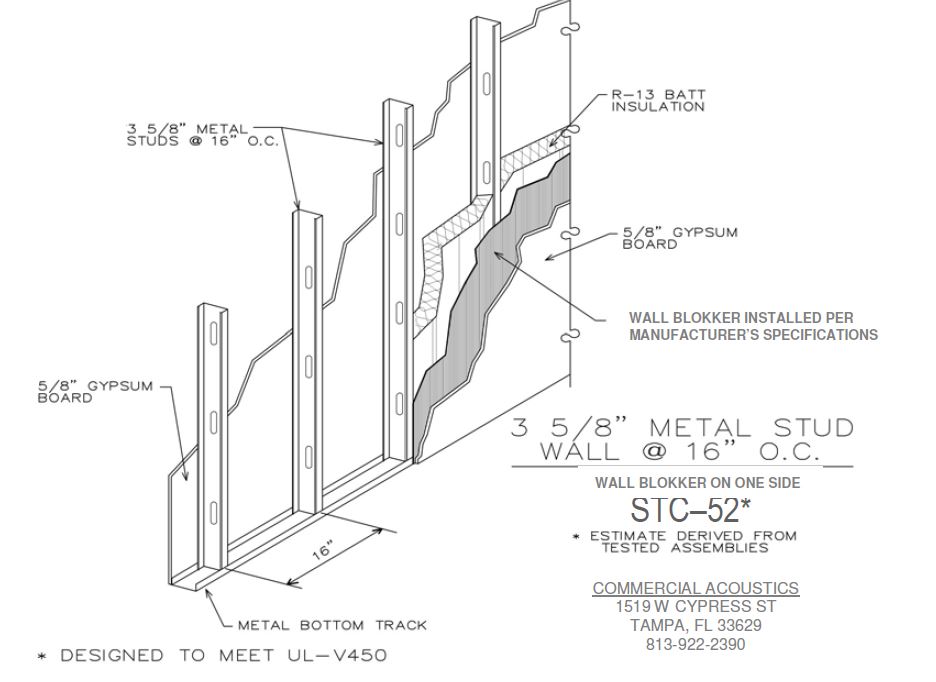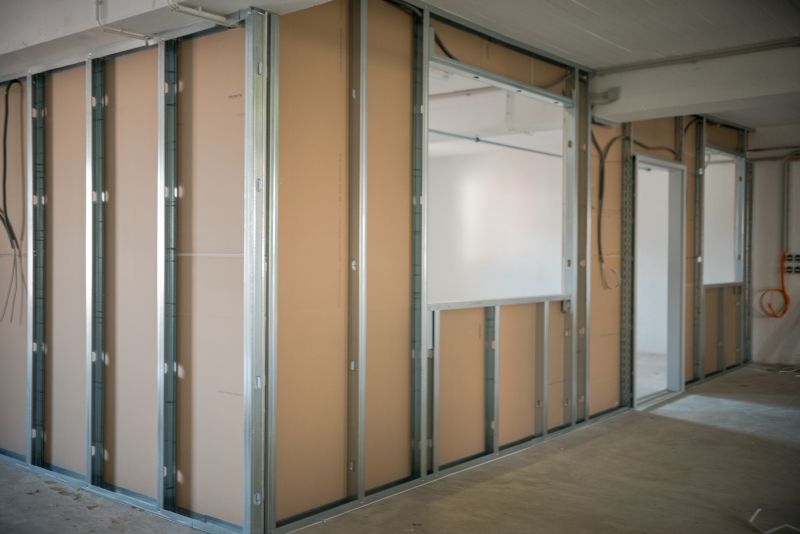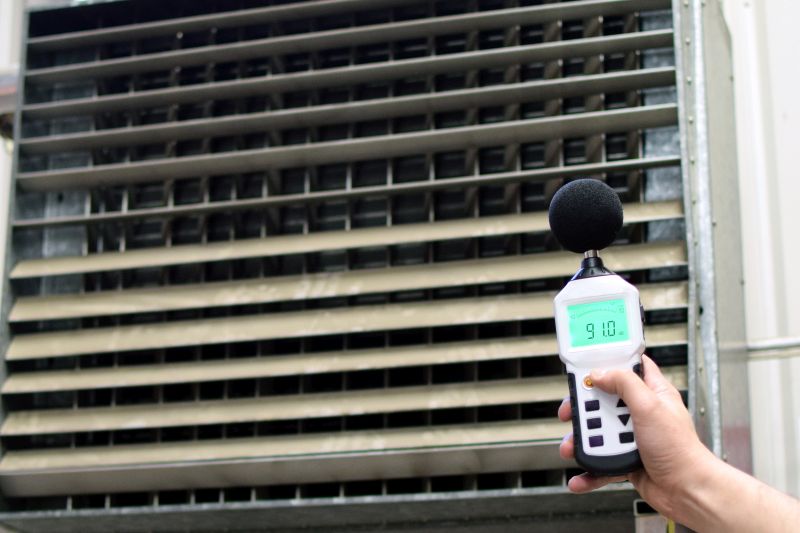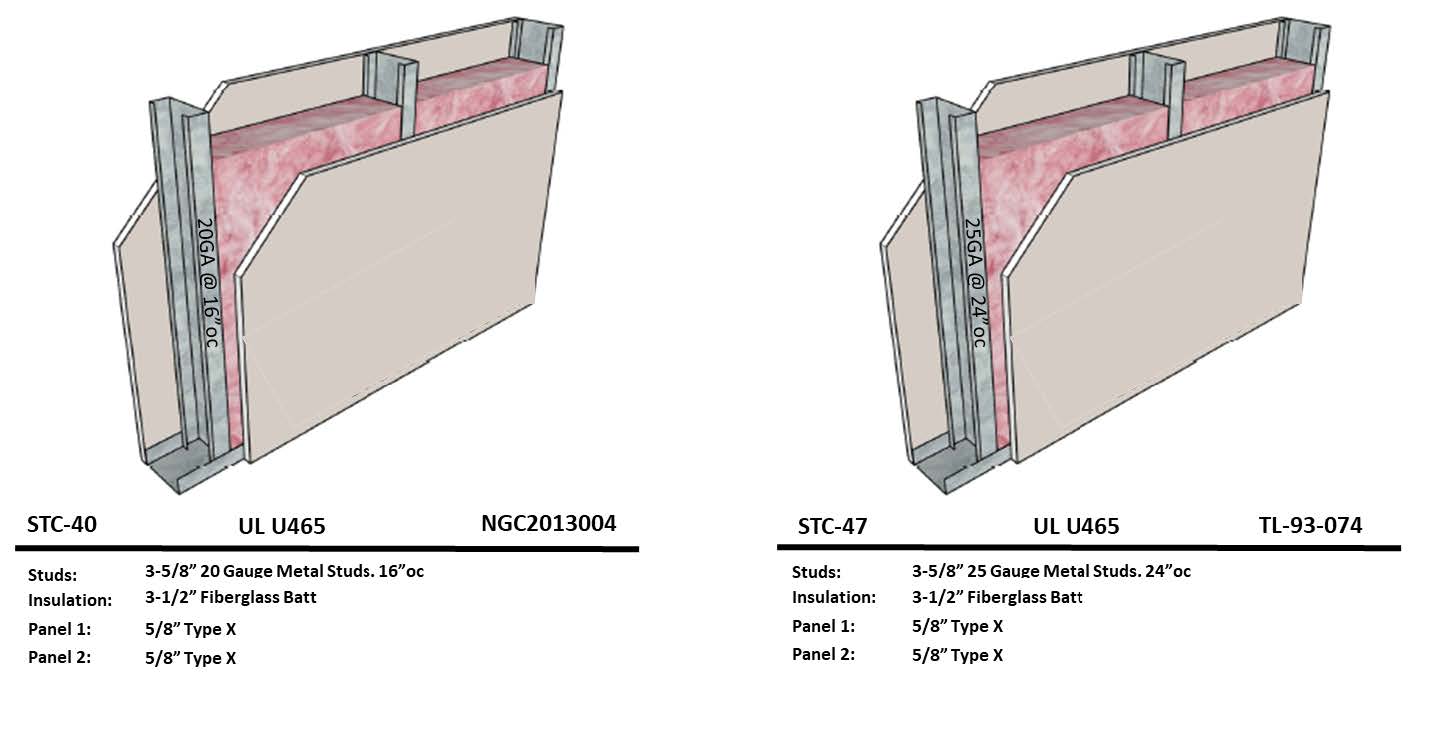There’s a large amount of misinformation regarding the common sound rating criteria used by acoustical consultants and architects; from STC and NRC to IIC and Delta-IIC, many of these various ratings measure significantly different performance metrics of the assemblies in question. Below, we explore the data gathered, analysis performed, and underlying ASTM specifications used to […]
Category Archives: Soundproofing Tips
There are two complementary principles of soundproofing – flanking and workmanship. Sound Flanking Pathways 1% Rule: “Flanking” is the process of sound bypassing the partition through its path of least resistance. The 1% rule declares that a 1% opening in a partition will allow 50% of the sound to pass through. A corollary is that […]
What Must Be Fixed Now vs. What Can Be Fixed Later Because acoustics are difficult to predict and calculate, many designers feel it may be easier to simply make a best guess, then deal with the issue post-occupancy if it turns out to be a problem. In some cases, this may be a reasonable approach. […]
Vibration (Structure-Borne) and Airborne Sound There are two primary modes of sound travel in Architectural Acoustics – through air, and through solid components, such as walls, floors, beams, columns, and other rigid building elements. This is because the molecules of the material are so much closer together. Sound travels much more quickly in hard materials […]
Sound Issues fall into a few basic categories. By correctly defining and categorizing your sound problem or concern, you can effectively design a treatment for the space without spending money on unnecessary mitigation approaches that do not yield results. Contact Us About Your Sound Issues Checklist to Determine Noise Issue and Treatment Options: What is […]
NC, or Noise Criteria, is the background noise level attributable to HVAC and other background mechanical noises. In certain spaces, it is important to reduce this NC level so that sounds are clearly heard. This is common in theaters and cinemas where background noise may impair the ability of attendees to enjoy the show/performance. Treating […]
Acoustic Consulting Equipment There are a number of specialized pieces of equipment trained Acoustic Consultants should have for effective consulting. These include the following: Sound Pressure Level (SPL) Meter: sometimes called a decibel meter, this tool is used to determine how loud noises are, and at which frequencies. There are several types of SPLs. Type […]
Soundproofing Walls – Increase STC, Decrease Cost You lose 7 STC points by moving from 25‐gauge studs at 24” on center to 20-gauge studs at 16” on center. This cannot be emphasized enough – the number one factor in the soundproofing capacity of a wall is the studs, and not the drywall. The notion of […]
Sound Masking is the method of adding ambient noise to a space to “drown out” background distractions and conversations, without impairing the ability to communicate. This is often the least understood sound control methodology, since it is counter-intuitive that adding noise into a space may improve the acoustics within. Sound masking works by subtly and […]
To understand the best ways to mitigate sound issues and properly identify them, it is critical to have a basic understanding of acoustics. By understanding how we measure and define core acoustical properties, you can diagnose issues and right-size solutions. Below we will cover the simplified Basic Theory of sound: Core Acoustical Properties Core acoustical […]










